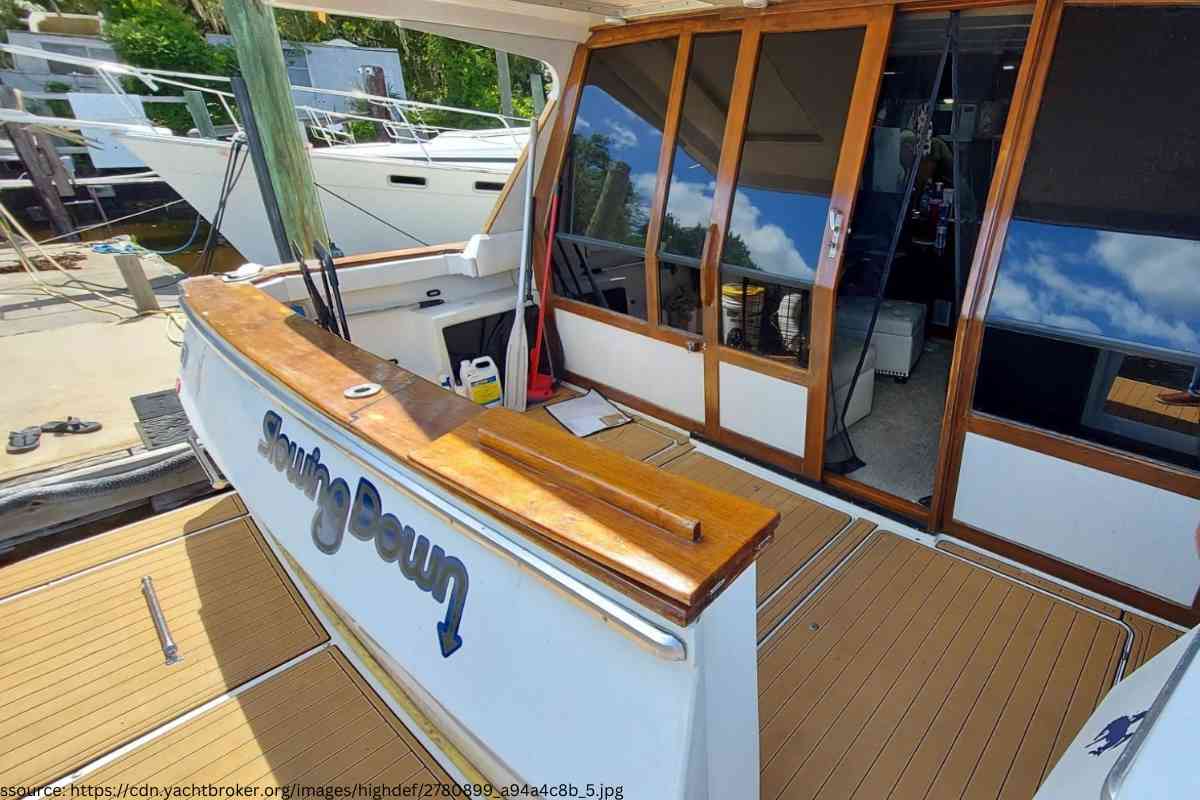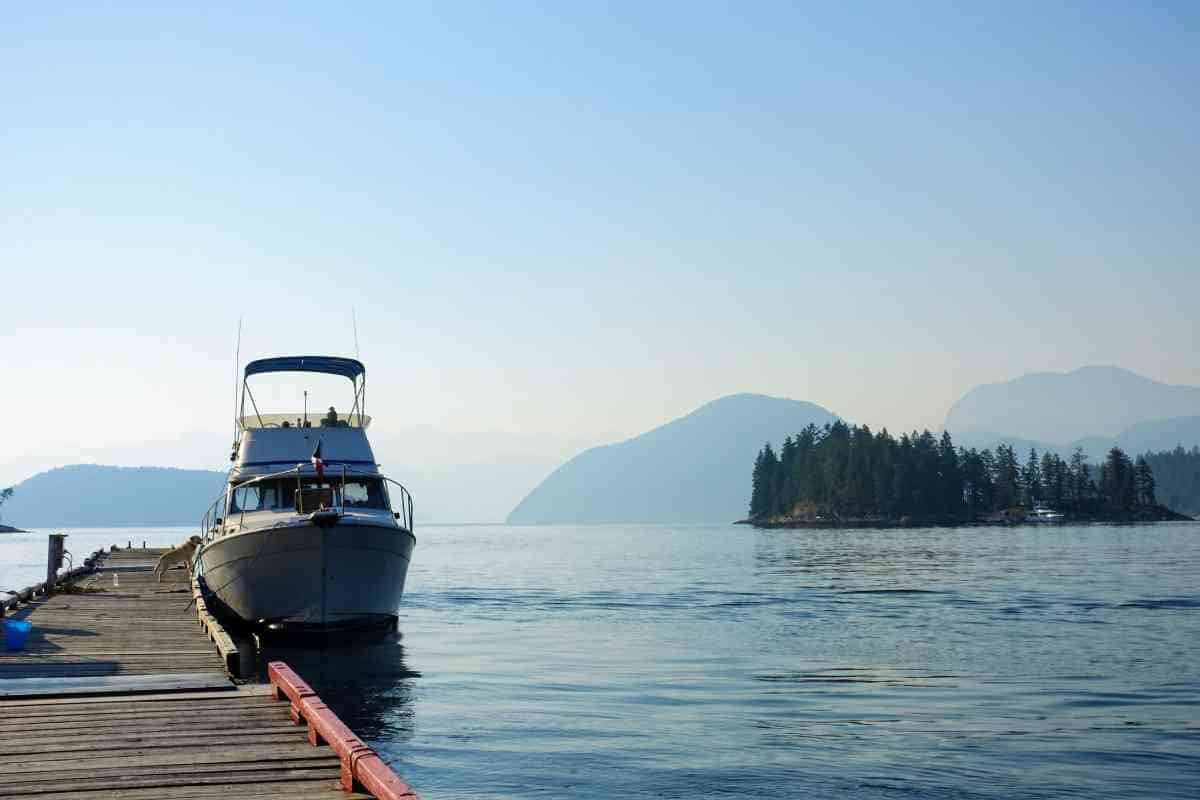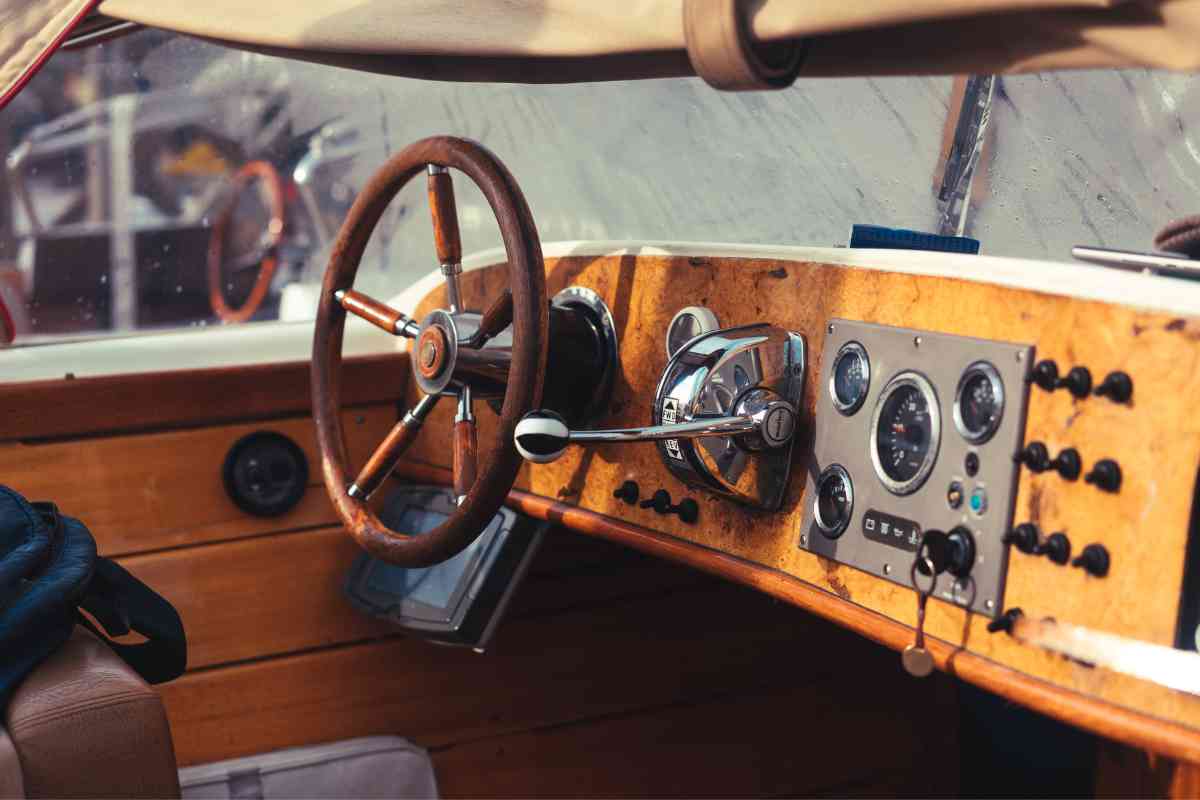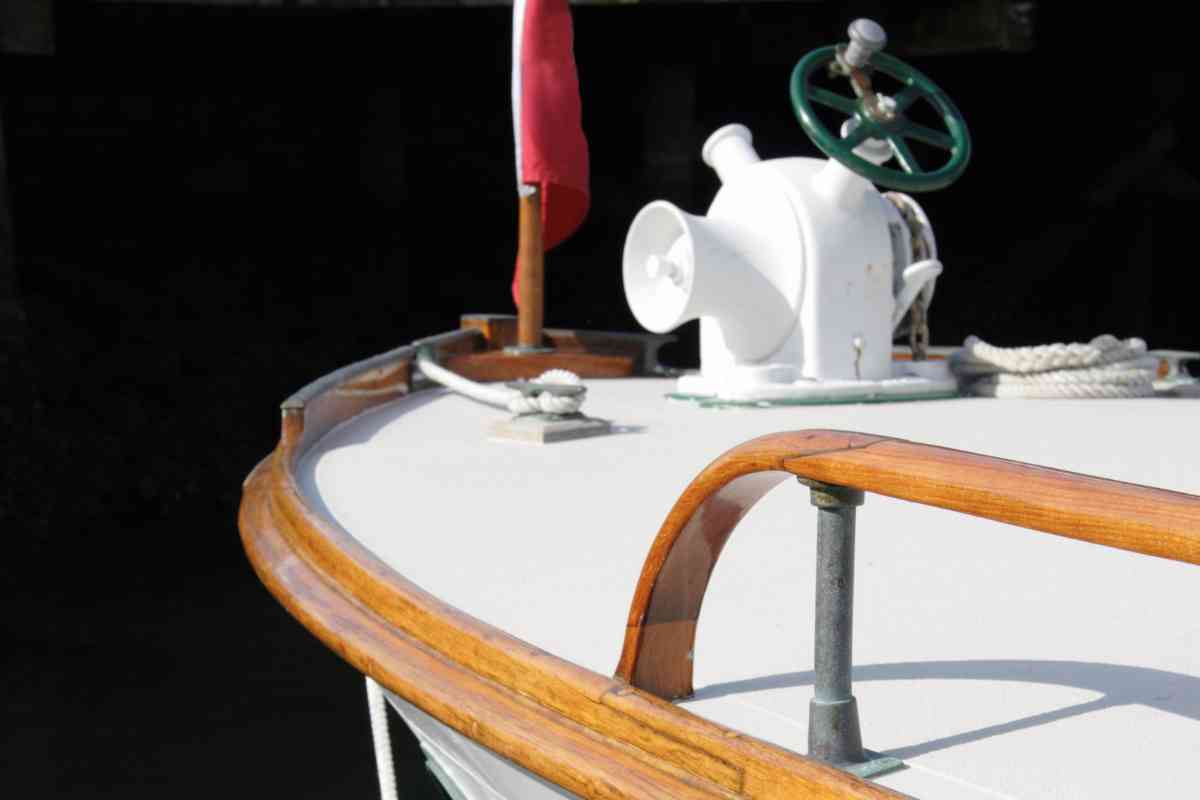When Did Bayliner Stop Using Wood in Their Boats?
Bayliner is a well-known brand in the boating industry, offering a range of recreational boats for fishing, cruising, and water sports. Over the years, the company has evolved its manufacturing processes and materials to improve the quality and durability of its boats. One of the key changes that Bayliner made was in its use of wood in boat construction.

When did Bayliner stop using wood in their boats?
Bayliner, a prominent brand in the boating industry, transitioned from using traditional wood to more durable materials in their boats over time. The significant shift occurred in the early 2000s, when they transitioned to foam core.
The change enhanced boat performance, decreased weight, and boosted durability, thereby phasing out wood usage in newer models. However, some older models may still include wood components requiring careful maintenance to prevent deterioration.
Bayliner started using marine-grade plywood in its boats around 1993 to 1998, depending on the model. This was a significant shift from the traditional use of wood in boat construction, which had been a common practice for many years.
However, even with the use of marine-grade plywood, water can still cause issues if it collects in the hull. Despite this, wood remains one of the strongest materials for stringers and transoms in most boats, and many manufacturers still use it today.
Bayliner’s History with Wood
Bayliner, one of the world’s most iconic boat brands, has a long history of using wood in their boats. In the past, wood was a common material used in boat construction due to its durability and strength. However, as technology advanced, manufacturers began to realize the benefits of using other materials such as fiberglass and marine-grade plywood.
Bayliner started using marine-grade plywood to encapsulate wood in their boats around 1993 to 1998, depending on the model. This was done to prevent the wood from rotting and causing issues with the boat’s structure. However, even with this encapsulation, wood can still cause problems if used as a rain collector.
Bayliner continued to use wood in their boats until they made the switch to foam core. It is unclear when exactly this switch occurred, but it is believed to have happened in the early 2000s. This change was made to improve the boat’s performance, reduce weight, and increase durability.
While Bayliner no longer uses wood in their boats, older models may still have wood components such as decking and stringers. It is important for owners of older Bayliner boats to regularly inspect these components for signs of rot or damage and replace them as necessary.
Bayliner has a long history with wood in their boats but has made the switch to using other materials such as marine-grade plywood and foam core. Owners of older Bayliner boats should be aware of the potential issues with wood components and regularly inspect and replace them as necessary.

Transition to Fiberglass
Bayliner, a popular boat manufacturer, has been known for its quality boats for many years. In the past, Bayliner used plywood for the cockpit deck (floors) in their boats. However, with the advancement of technology and the need for better quality boats, Bayliner started to transition to fiberglass and composite materials.
Fiberglass is a popular material used in boat construction due to its durability and strength. It is a composite material made of fine glass fibers and resin. This material is resistant to corrosion and can withstand harsh marine environments. Bayliner recognized the benefits of fiberglass and began using it in their boats.
The transition from wood to fiberglass was gradual and took place over several years. Bayliner started to incorporate fiberglass panels for the cockpit deck in their boats in the mid-2000s. This change was part of a hull redesign that aimed to improve the quality and durability of their boats.
The transition to fiberglass was a significant step for Bayliner, as it improved the overall quality of their boats. Fiberglass is stronger and more durable than wood, making it more resistant to wear and tear. It also requires less maintenance, which saves time and money for boat owners.
Bayliner’s transition to fiberglass was a significant step towards improving the quality of their boats. The use of composite materials like fiberglass has become increasingly popular in boat construction due to its strength and durability. The transition was gradual and took place over several years, but it ultimately led to the production of better quality boats.
Issues with Wood in Boats
Wood has been a traditional material for boat construction for centuries. However, wood has its drawbacks, and many boat manufacturers have phased out its use in favor of more durable materials like fiberglass. Below are some of the issues associated with wood in boats:
- Wood Rot: Wood is prone to rot when exposed to moisture, which can compromise the structural integrity of a boat. Rotting wood can also attract insects, which can further damage the wood.
- Water Intrusion: Water can seep into the wood through small cracks and gaps, causing the wood to expand and contract. Over time, this can lead to warping and cracking, which can compromise the boat’s structure.
- Maintenance and Upkeep: Wood requires regular maintenance to keep it in good condition. This includes sealing and varnishing to protect it from the elements. Failure to maintain wood properly can lead to rot and other problems.
Bayliner, like many other boat manufacturers, has phased out the use of wood in its boats. This was done to improve the durability and longevity of their boats, as well as to reduce maintenance costs for boat owners.
By using more durable materials like fiberglass and marine grade plywood, Bayliner has been able to produce boats that are more resistant to rot and water intrusion, and require less maintenance over time.
While wood has been a traditional material for boat construction, it has its drawbacks. Bayliner and other boat manufacturers have phased out the use of wood in favor of more durable materials to improve the durability and longevity of their boats, reduce maintenance costs for boat owners, and improve overall safety.
Comparison with Other Brands

Bayliner is not the only boat manufacturer that has transitioned away from using wood in boat construction. Many other brands have also made the switch to all-synthetic materials for their boats. Here are a few examples:
- Boston Whaler: This company has been using foam-filled fiberglass construction for over 60 years, with no wood in their boats. They were one of the pioneers in this type of construction, and it has become a hallmark of the brand.
- Brunswick Corporation: This company owns several boat brands, including Bayliner, Boston Whaler, and Sea Ray. They have all transitioned away from using wood in boat construction.
- Triton: This boat manufacturer has been using fiberglass construction with no wood transoms since 1997.
- Champion: This brand was among the last to phase out wood in their boats.
- Ranger: This brand has been using all-composite construction since 1996.
- Grady-White: This company stopped using wood in their boats in 1998 and slowly phased it out in other components as well.
- Skeeter: This brand has been using all-composite construction since 1994.
- Legend: This company has been using all-composite construction since 1995.
- Nitro: This brand has been using all-composite construction since 1999.
- Scout Boats: This company has been using all-composite construction since 1990.
Overall, it is clear that many boat manufacturers have made the switch to all-synthetic materials in boat construction. This has become the industry standard, and it is rare to find a new boat that uses wood in any significant way.
Bayliner’s Quality and Performance
Bayliner boats have been around for over 60 years, and they have built a reputation for producing affordable, entry-level boats for the mass market. While they have had their ups and downs over the years, Bayliner has consistently delivered boats that offer good value for money.
Bayliner boats are generally well-built and sturdy, with a focus on functionality rather than luxury. They are designed to be easy to use and maintain, making them a popular choice for first-time boat owners.
In terms of performance, Bayliner boats are known for being reliable and efficient. They are not high-performance boats, but they are designed to get you from point A to point B without any fuss. The hulls are generally well-designed, and they provide a smooth ride even in choppy waters.
Bayliner boats have historically used wood in their construction, but they have been moving away from wood in recent years. While some older models may still have wood components, newer models are more likely to be made entirely of fiberglass or other composite materials.
Bayliner boats offer good quality and performance for the low end of the market. They are a solid choice for anyone looking for an affordable, entry-level boat.

Specific Model Analysis
Bayliner has produced a wide range of boats over the years, and the use of wood in their construction has varied depending on the model. Here’s a closer look at some specific models and when they stopped using wood:
- Cruisers: Bayliner’s cruisers were among the first models to switch to all-fiberglass construction, with most models using fiberglass stringers and transoms by the early 1990s. However, some older models may still have wood components, so it’s important to check the specific model and year before purchasing.
- E-Boats: Bayliner’s E-Boats (Element and Element XL) are designed for maximum efficiency and minimal maintenance, and as such, they do not use any wood in their construction. The hulls are made of Bayliner’s proprietary M-Hull design, which is a single piece of fiberglass with no seams or joints.
- Fishing Boats: Bayliner’s fishing boats have also largely transitioned to all-fiberglass construction, with most models using fiberglass stringers and transoms by the late 1990s. However, some older models may still have wood components, so it’s important to check the specific model and year before purchasing.
- Center Console Boats: Bayliner’s center console boats are designed for fishing and other water sports, and as such, they do not use any wood in their construction. The hulls are made of fiberglass, and the stringers and transoms are typically made of composite materials for maximum strength and durability.
- Stereo and Electrical Components: Bayliner’s boats are equipped with a variety of electrical components, including stereos, wiring harnesses, and more. These components are typically made of non-wood materials, such as plastic and metal, to ensure maximum durability and longevity.
- Exhaust and Chrome-Plated Zinc: Bayliner’s exhaust systems and chrome-plated zincs are also made of non-wood materials, such as stainless steel and brass, to ensure maximum durability and corrosion resistance.
- Hatches: Bayliner’s hatches are typically made of non-wood materials, such as plastic and fiberglass, to ensure maximum durability and water resistance. However, some older models may still have wood hatches, so it’s important to check the specific model and year before purchasing.
Bayliner has made a concerted effort to eliminate wood from their boats in favor of more durable and long-lasting materials. However, it’s important to check the specific model and year before purchasing to ensure that there are no wood components that could lead to maintenance issues down the road.
Recalls and Issues
Bayliner boats have had their fair share of recalls and issues. Here are some of the most common problems that have been identified:
- 1982 Recall: In 1982, Bayliner initiated a recall that affected ten boats. The recall was due to a problem with the fuel system that could cause a fire. The recall ended on March 8, 1982.
- 2004 Model Bowrider: The 2004 Bayliner model 180s had several issues identified. One of the most significant issues was an improperly wired stereo, which led to a recall of 63 boats.
- Wooden Stringers: Almost all fiberglass boats have wood as part of their stringers. While the wood provides strength, it can become a problem when it gets wet. Incorrectly installed fasteners for interior items and wiring can cause the wood to become wet. This issue has been identified in Bayliner boats.
It is worth noting that Bayliner started using marine-grade plywood around 1993 to 1998, depending on the model. While wood in itself is not bad, encapsulation is crucial to prevent issues. However, if the hull is used as a rain collector, it can still cause problems.
Overall, it is essential to keep an eye out for any recalls or issues with your Bayliner boat to ensure its safety and longevity.
Bayliner’s Current Construction Materials
Bayliner boats are known for their quality and durability. The company has come a long way since its early days of using wood as the primary construction material. Today, Bayliner uses a combination of composite materials to construct their boats, which provides excellent strength and durability while being lightweight.
Bayliner’s current construction materials include fiberglass, foam, and resin. The fiberglass provides the strength and rigidity of the boat’s hull, while the foam is sandwiched between the fiberglass layers to provide additional strength and insulation. The resin is used to bond the materials together, creating a strong and durable composite structure.
Bayliner’s construction process is highly automated, which ensures consistency and precision in the construction of each boat. The company uses advanced technology and equipment to create boats that are both strong and lightweight. The boats are also designed with a focus on ergonomics and comfort, making them ideal for long days on the water.
Bayliner’s boats are known for their high-quality craftsmanship. The company’s attention to detail is evident in the fit and finish of each boat. The boats are designed with a focus on functionality and aesthetics, ensuring that they look great and perform well on the water.
Bayliner’s current construction materials and process provide excellent strength and durability while being lightweight. The company’s focus on quality craftsmanship ensures that each boat is built to the highest standards. Bayliner’s boats are a great choice for anyone looking for a reliable and well-built vessel for their boating adventures.
Conclusion
In summary, Bayliner stopped using wood in their boats around 1993 to 1998, depending on the model. While wood in itself is not necessarily a bad material, encapsulation is crucial to prevent rot and other issues. Bayliner’s decision to transition to marine-grade plywood and other materials was likely driven by a desire to improve performance, quality, and durability, as well as reduce maintenance requirements for boat owners.
It is worth noting that while Bayliner is a lower-end boat manufacturer, it does not necessarily mean that their boats are of poor quality. Many factors contribute to a boat’s performance and longevity, including design, materials, and maintenance. Bayliner’s decision to move away from wood in their boats was likely a step towards improving these factors and providing a better experience for their customers.
Overall, it is important for boat owners to understand the materials used in their boats and how they impact performance, maintenance, and durability. While wood may have been a common material in the past, modern advancements in materials science have provided many alternatives that offer superior performance and longevity. By staying informed and making informed decisions about boat materials, owners can ensure that their boats provide a safe, enjoyable, and reliable experience for years to come.
Frequently Asked Questions
When did Bayliner switch to fiberglass hulls?
Bayliner started using fiberglass hulls in the 1960s. This was a significant change for the boating industry, as it marked a transition from traditional wooden boats to more modern, durable materials.
When did Bayliner stop using wood in their boats?
Bayliner began phasing out the use of wood in their boats in the early 1990s, with most models using marine-grade plywood for stringers and transoms. By the late 1990s, Bayliner had completely switched to using composite materials for all structural components.
What is the typical lifespan of a Bayliner boat?
The lifespan of a Bayliner boat depends on several factors, including how well it is maintained, how often it is used, and the conditions in which it is operated. With proper care and maintenance, a Bayliner boat can last for many years.
What are the most common issues with Bayliner boats?
Some of the most common issues with Bayliner boats include generator problems on older models, issues with the bowrider design on 2004 models, and structural issues such as poor resale value and labor practices. However, it’s important to note that not all Bayliner boats will experience these issues, and many owners are very happy with their boats.
Are Bayliner boats good for fishing?
Bayliner boats can be used for fishing, but they are not specifically designed for this purpose. If you are looking for a boat that is specifically designed for fishing, you may want to consider a different brand or model.
What is the resale value of a Bayliner boat?
The resale value of a Bayliner boat depends on several factors, including its age, condition, and the current market demand. Generally speaking, Bayliner boats have lower resale values than some other brands, but this can vary depending on the specific model and other factors.
